On the antisemitism in Martin Luther’s preachings
Martin Luther, the seminal figure of the Protestant Reformation, is often celebrated for his theological innovations and defiance of the Catholic Church. However, alongside his achievements, Luther’s legacy carries a darker, troubling aspect: his virulent antisemitism. In writings such as On the Jews and Their Lies (1543), Luther advocated for policies of exclusion, forced labor, and violence against Jewish communities. These statements not only reinforced existing prejudices in 16th-century Europe but also laid ideological groundwork for later atrocities, including the Holocaust.

Title page of Martin Luther’s On the Jews and Their Lies, 1543. Source: Wikimedia Commonsꜛ (license: public domain)
Luther’s early views on the Jews
Initially, Luther’s relationship with Judaism seemed less antagonistic. In his early writings, particularly during the period leading up to the publication of his 95 Theses in 1517, Luther expressed hope for the conversion of Jews to Christianity. He criticized the Catholic Church’s treatment of Jewish people, arguing that their resistance to conversion stemmed from the corruption and hypocrisy within Christian institutions. His treatise That Jesus Christ Was Born a Jew (1523) reflects this sentiment, advocating for a compassionate approach to Jewish communities in the hope of winning them over through kindness and dialogue.
However, Luther’s optimism proved short-lived. When Jews did not convert in significant numbers despite his reforms, his disappointment turned to frustration and, eventually, to outright hostility. This shift underscores a fundamental tension in Luther’s theology: his inability to reconcile the universal applicability of his message of salvation with the rejection of his teachings by Jewish communities.
The turning point: On the Jews and Their Lies
By the 1540s, Luther’s tone had changed dramatically. In On the Jews and Their Lies, he unleashed a tirade of antisemitic vitriol. The treatise accused Jews of being “poisonous envenomed worms” and “the enemies of Christ”, perpetuating medieval stereotypes about Jewish deceit and malevolence. Luther’s rhetoric was not limited to theological critique; it included explicit calls for violence and persecution. He proposed a series of measures to be taken against Jewish communities (“Zur Entladung von der Judenlast”, “To unload the Jewish burden”), including:
- The destruction of synagogues and Jewish schools:
That their synagogues or schools be set on fire. And that which will not burn be heaped up and covered with earth, so that no man shall see a stone or cinder forever. And these things should be done in honor of our Lord and Christianity, so that God may see that we are Christians.
- The destruction of Jewish homes:
Second, that their houses also be likewise broken down and destroyed. For they do the same things inside as they do in their schools. For this they may be put under a roof or in a stable.
- The confiscation of Jewish books, including religious texts:
Third, to take away all their prayer books and Talmud books.
- The banning of rabbis from teaching.
Fourth, that their rabbis be forbidden, life and limb, to teach any more.
- The prohibition of safe travel for Jewish people:
Fifth, that the Jews be deprived entirely of their convoys and roads. For they have no business in the country, since they are not lords, officials, merchants or the like. They should stay at home.
- The confiscation of Jewish wealth and property:
Sixth, that they be forbidden to take usury, and that all cash and jewels of silver and gold be taken from them.
- The forced labor of Jewish individuals:
Seventh, that the young, strong Jews and Jewesses be given flails, axes, karsts, spades, rocks and spindles, and be made to earn their bread by the sweat of their noses.
Such policies, while shocking, were not entirely novel in 16th-century Europe. Luther’s recommendations drew on existing anti-Jewish laws and practices, but his writings amplified and legitimized them through the authority of his theological standing.

1596 reprint of Vom Schem Hamphoras. Several months after publishing On the Jews and Their Lies, Luther wrote the 125-page Vom Schem Hamphoras und vom Geschlecht Christi (Of the Unknowable Name and the Generations of Christ), in which he equated Jews with the Devil. Luther used the medieval “Judensau” relief on the Lutherstadt Wittenberg church to defame the Jews. In doing so, he passed this motif on to modern times and thus helped to prepare the ground for modern anti-Semitism. Source: Wikimedia Commonsꜛ (license: public domain)
Luther’s rhetoric and its alignment with general Christian antisemitism
Luther’s antisemitism did not emerge in a vacuum. Medieval Europe was rife with anti-Jewish sentiment, shaped by religious, economic, and social factors. Jews were often scapegoated for societal problems, accused of deicide, and subjected to accusations of ritual murder and well poisoning. These prejudices were codified in laws that restricted Jewish professions, forced Jewish people into segregated living quarters (ghettos), and imposed special taxes.

Burning of Jews during the plague pandemic in 1349, miniature by Pierart dou Tielt illustrating the Tractatus quartus by Gilles li Muisit, 1352. Source: Wikimedia Commonsꜛ (license: public domain)
What set Luther apart was his use of theological reform as a platform for intensifying these prejudices. By couching his antisemitism in the language of religious doctrine and divine will, he gave it an intellectual and moral veneer that would resonate far beyond his own time. Luther’s stature as a religious reformer endowed his antisemitic ideas with legitimacy, reinforcing existing biases and encouraging their proliferation.

‘Judensau’ relief on the south-east wing of the town church in Wittenberg. The ‘Judensau’ motif depicts Jews in a derogatory and dehumanizing manner, often in the company of pigs, an animal considered unclean in Jewish tradition. It was intended to warn Christians of the allegedly diabolical customs of the Jews, to ostracize, humiliate and mock them and to defame Judaism: there, the pig is considered unclean (tame in Hebrew) and is subject to a religious food taboo. 49 reliefs, sculptures, sculptures or murals with this motif have been documented since 1230, mainly in German-speaking countries, 44 of which are still preserved. Source: Wikimedia Commonsꜛ (license: CC BY-SA 4.0)
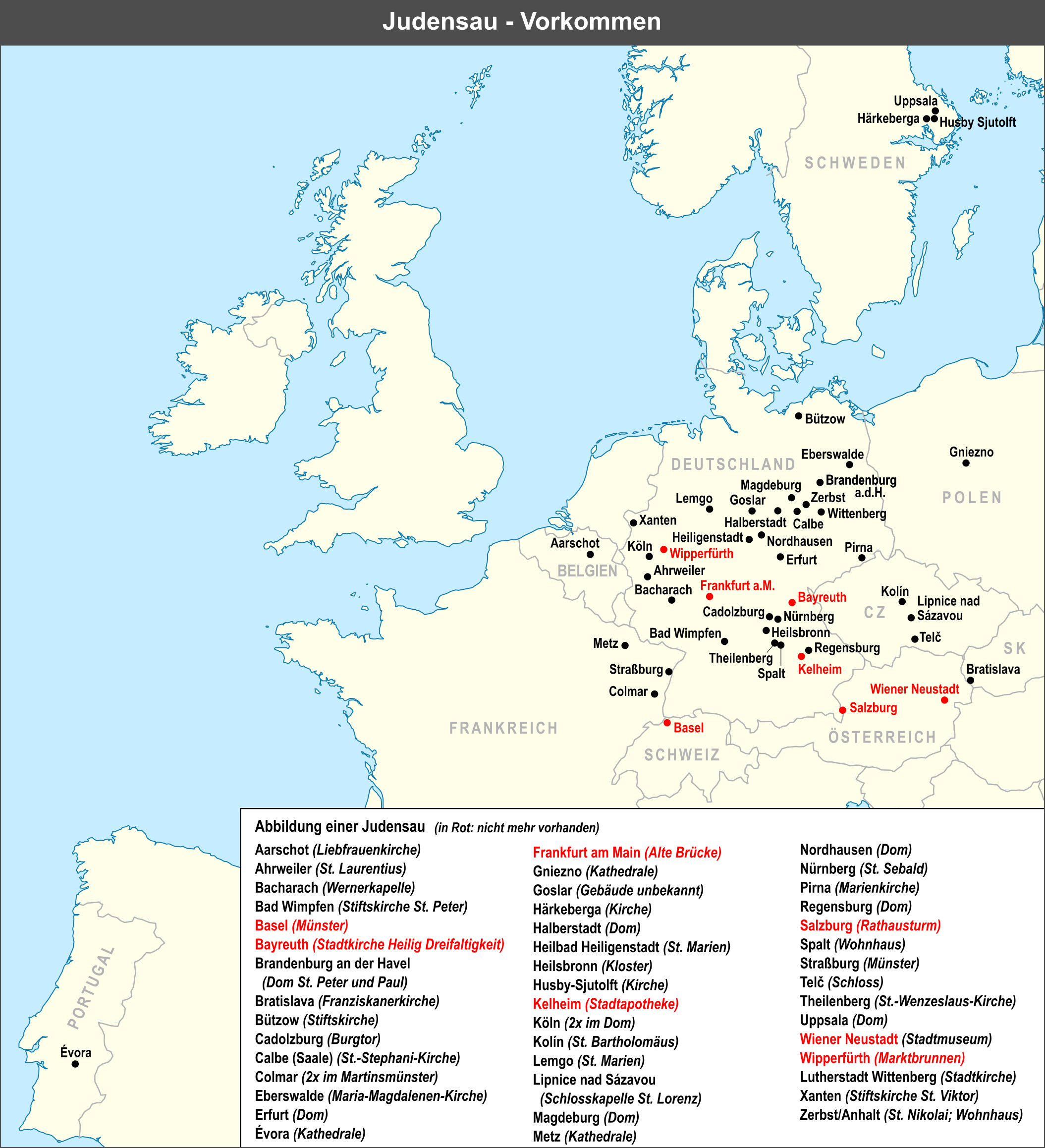
Occurrence of the ‘Judensau’ motif as a sculpture, relief or mural in Central Europe. All known occurrences are indiciated by a black dot. The red dots indicate the (few!) occurrences that have been removed or destroyed. Source: Wikimedia Commonsꜛ (license: CC BY-SA 3.0)
The legacy of Luther’s antisemitism
Luther’s antisemitic writings had a lasting impact on European culture and religious thought. Over the centuries, his views were cited by those seeking to justify anti-Jewish policies and actions. The Lutheran Church in particular retained elements of Luther’s hostility toward Judaism, influencing its approach to Jewish communities well into the modern era.
The connection between Luther’s antisemitism and the Holocaust remains a subject of scholarly debate. While Luther cannot be held directly responsible for events that occurred nearly four centuries after his death, his writings undeniably contributed to the cultural and ideological environment in which such atrocities became possible. The Nazis, for instance, cited Luther’s On the Jews and Their Lies in their propaganda, portraying him as a forerunner of their own policies.
Luther’s antisemitism and Christian theology
Luther’s antisemitism also poses a moral and theological dilemma for Protestantism. His insistence on the exclusivity of salvation through Christ, combined with his failure to acknowledge the shared heritage of Judaism and Christianity, created a theological framework that marginalized Jewish communities. This exclusivist mindset stands in stark contrast to the inclusive and compassionate teachings of Jesus, who emphasized love and understanding for all people – but was not exclusive to Luther: Christian antisemitism has existed since the early days of this religion.
By turning his back on dialogue and resorting to invective, Luther betrayed the principles of humility and grace that were central to his own theological reforms. His antisemitism not only tarnished his legacy but also undermined the ethical foundation of his broader message.
Conclusion
Martin Luther’s antisemitic rhetoric remains one of the most troubling aspects of his legacy. His early hope for Jewish conversion turned into bitter hostility when his expectations were not met, leading to calls for violence and persecution. By embedding his antisemitism within his theological framework, Luther lent religious legitimacy to ideas that would later fuel centuries of discrimination and violence against Jewish communities.
The enduring impact of Luther’s writings underscores the dangers of religious authority being used to justify exclusion and oppression. His words were later cited by those seeking to rationalize anti-Jewish policies, most infamously by Nazi propagandists, demonstrating how theological rhetoric can be manipulated to serve political ends. While Luther himself cannot be held responsible for later atrocities – just because he is dead –, his influence on European antisemitism cannot be ignored.
This contradiction within Luther’s legacy forces a critical reassessment of his role in shaping Christian thought. Can his theological innovations be separated from the darker consequences of his rhetoric? Acknowledging his antisemitism does not diminish his impact on the Reformation, but it does demand a more nuanced understanding of the moral responsibilities of religious leaders. The challenge remains to ensure that faith, rather than being a tool for division, serves as a force for ethical reflection and inclusivity.
References and further reading
- Martin Luther, Von den Juden und ihren Lügen, 1543, Facsimile Publisher, 2016, ISBN: 978-9333628044
- Martin Luther, Tischreden, 1986, Reclam, ISBN: 978-3150012222
- Nirenberg, David, Anti-Judaism: The Western Tradition, 2018, Head of Zeus, ISBN: 978-1789541168
- Karlheinz Deschner, Kriminalgeschichte des Christentums: Bd. 8 Das 15. und 16. Jahrhundert. Vom Exil der Päpste in Avignon bis zum Augsburger Religionsfrieden, 2006, Rowohlt Taschenbuch Verlag, ISBN: 9783499616709
- Cicero article on “Judenfeind Luther – Die dunkle Seite des Reformators”ꜛ (in German)


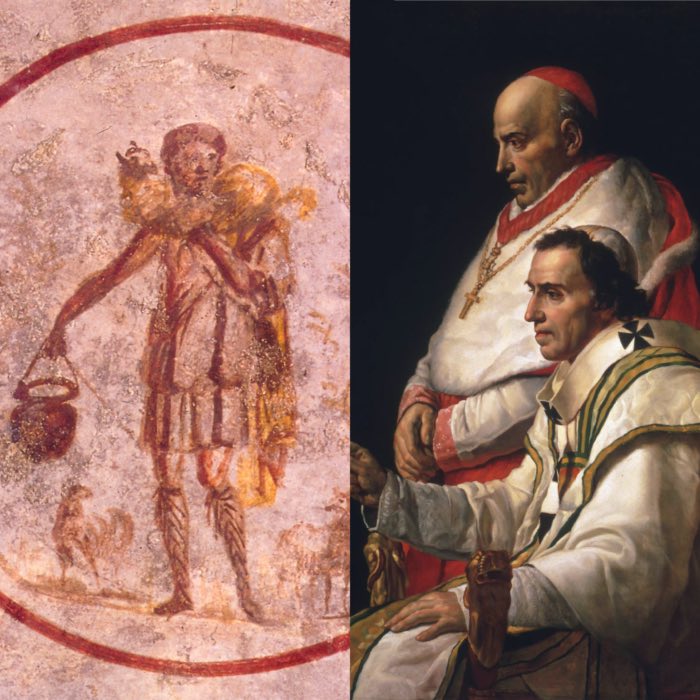
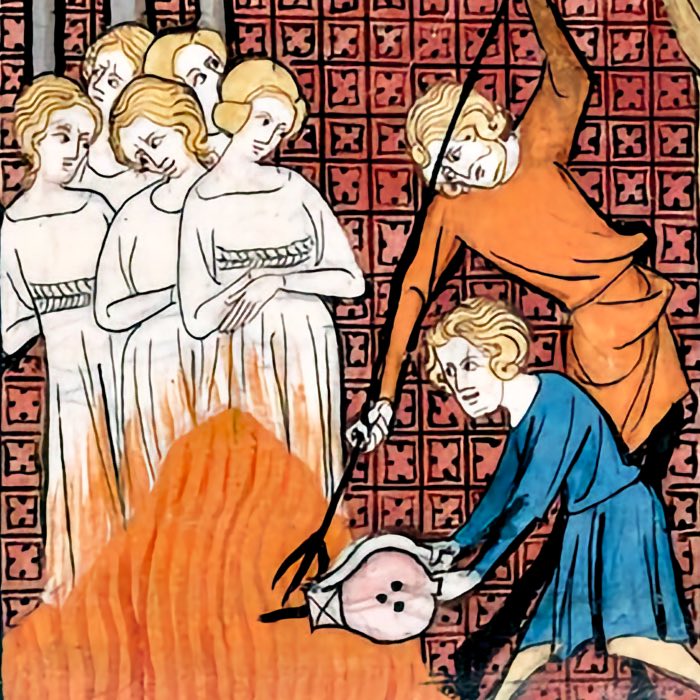
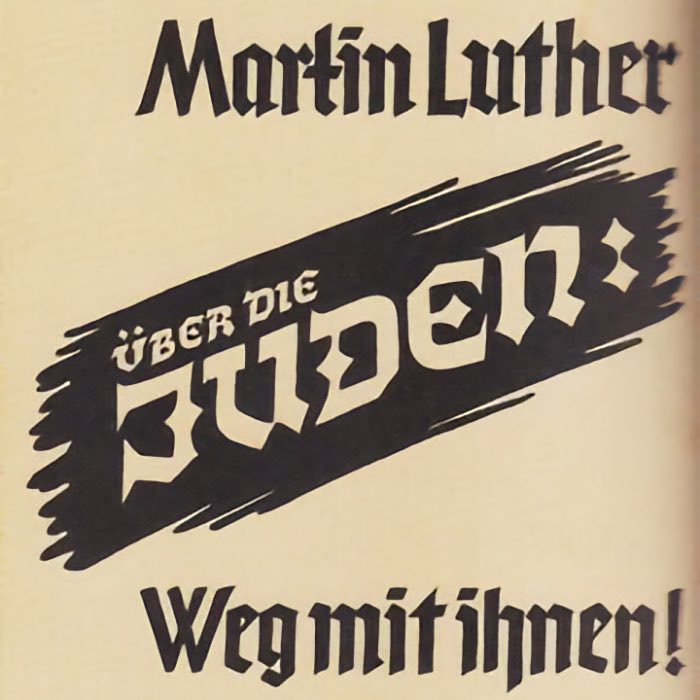

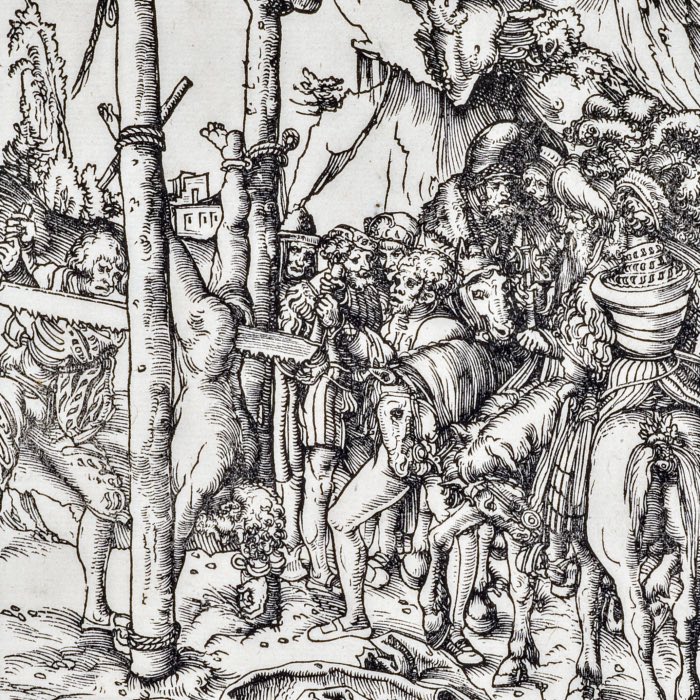
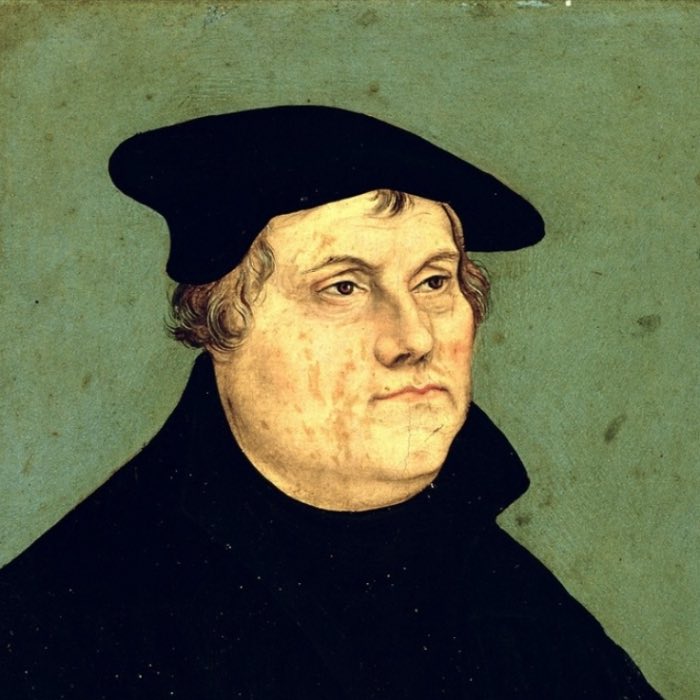
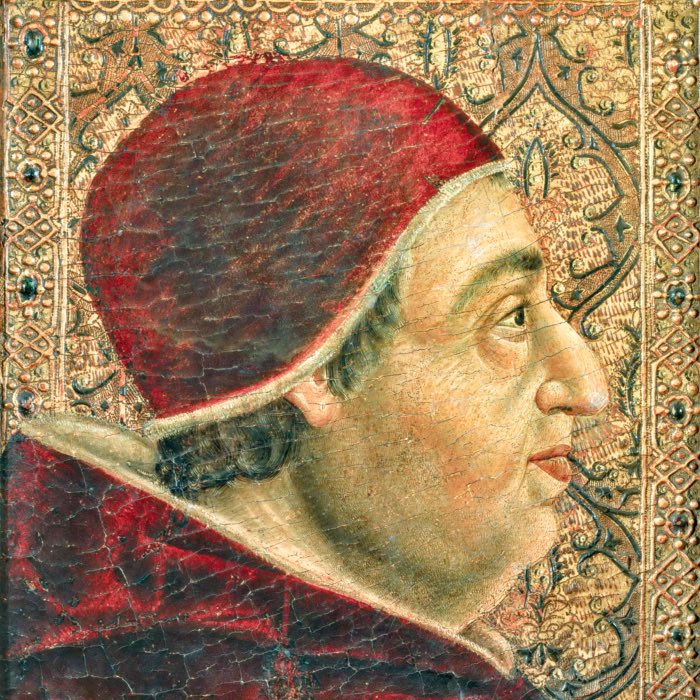

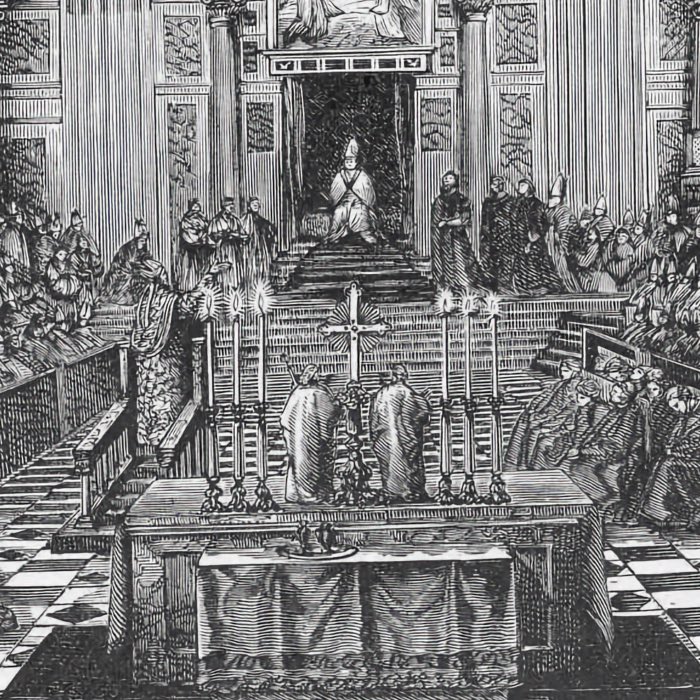
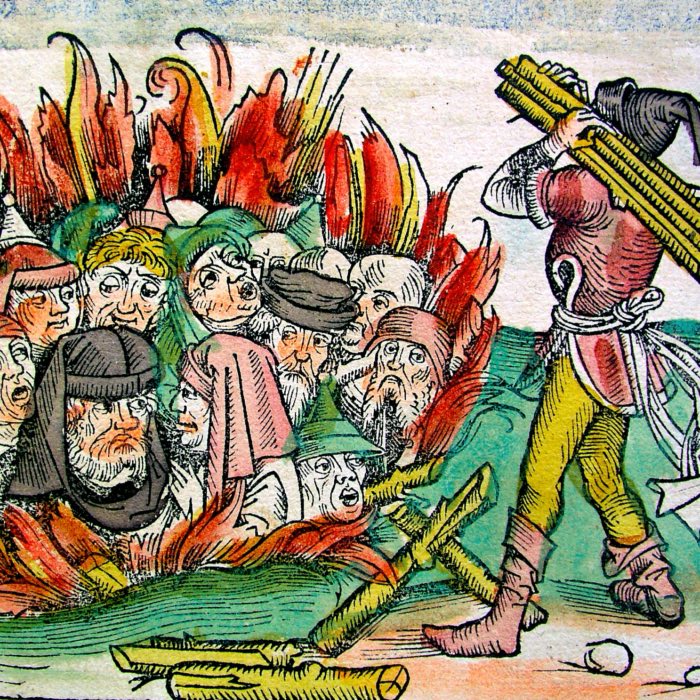

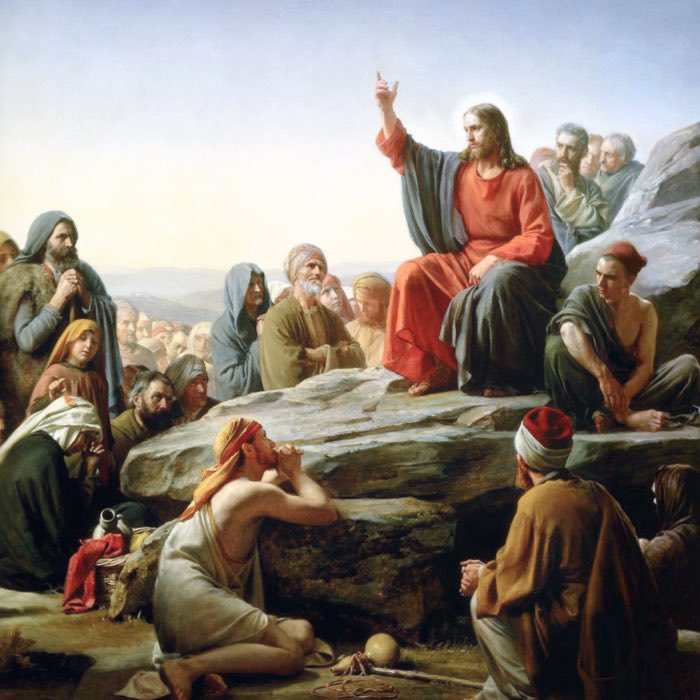


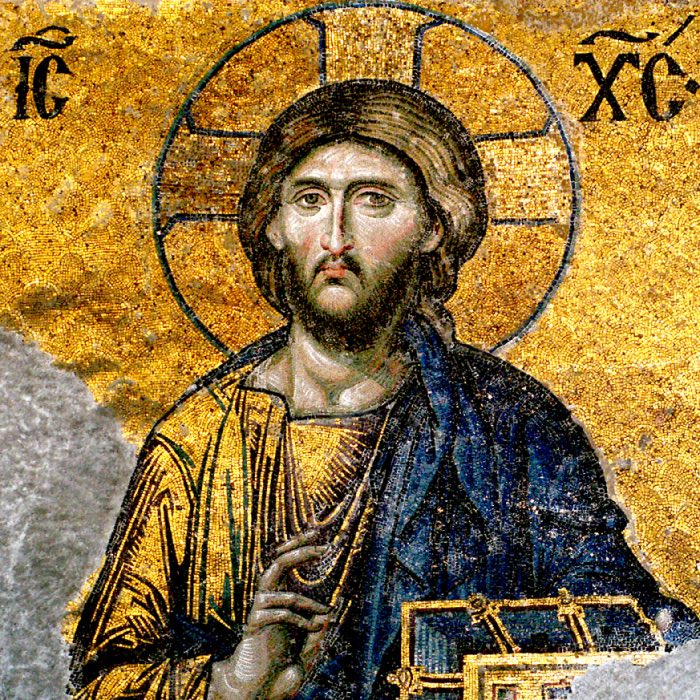
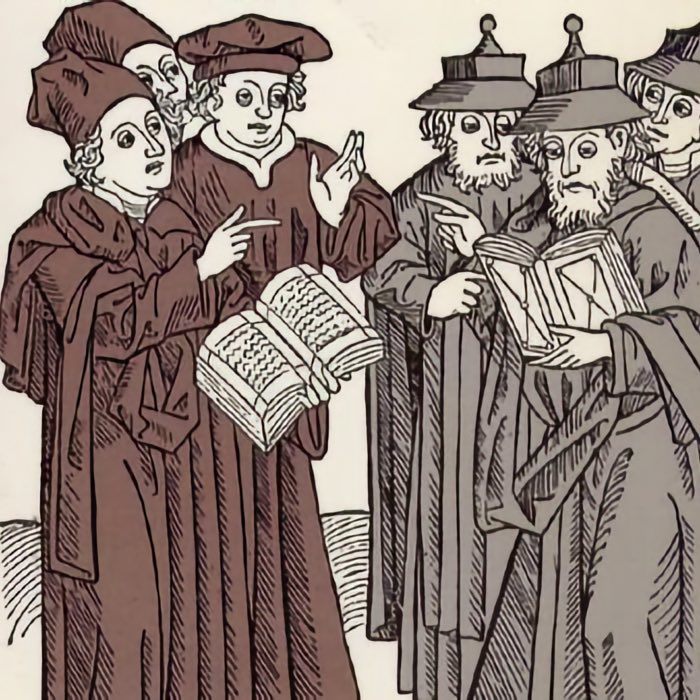

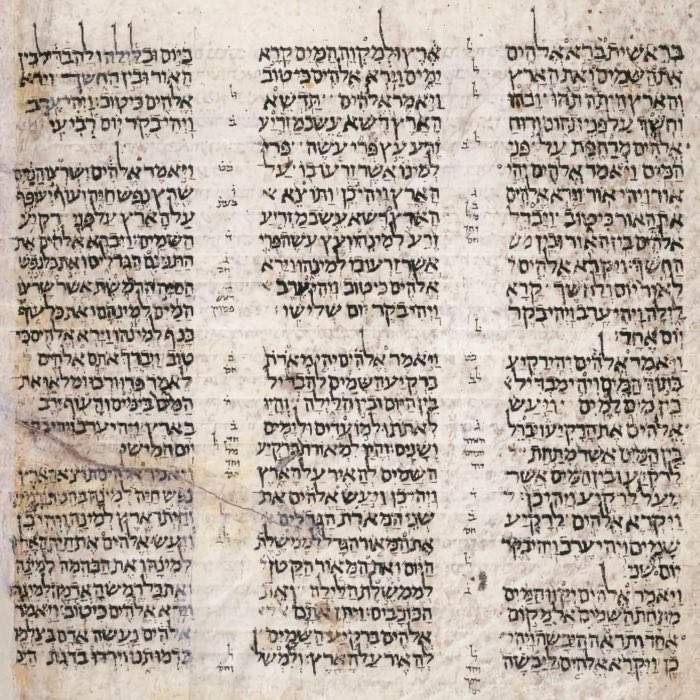




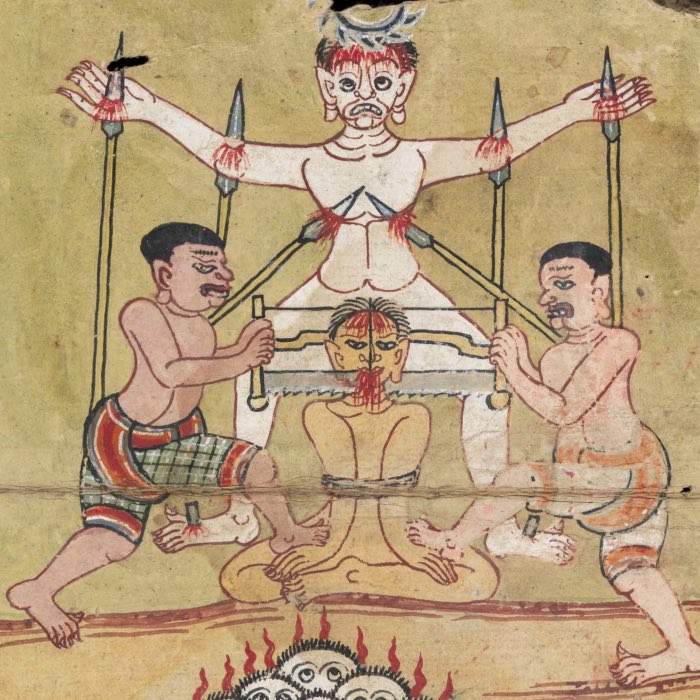


comments